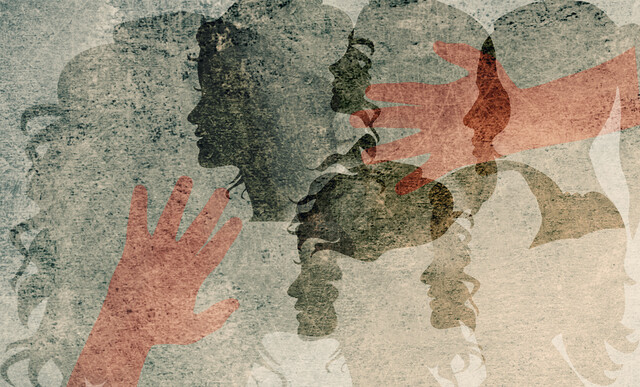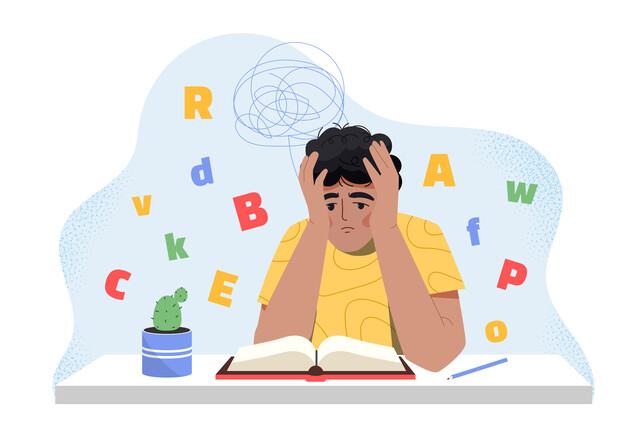Introduction
According to the U.S. Centers for Disease Control and Prevention1, developmental disabilities are "a group of conditions due to an impairment in physical, learning, language, or behavior areas." By definition, these conditions usually begin during the developing or early years of life and tend to have lifelong effects. Developmental disabilities may be caused by factors related to both nature and nurture. For example, many have genetically-based causes, while some are caused by environmental threats, like fetal exposure to alcohol before birth. For some disabilities of this type, exact causes are unknown.
Current statistics show that approximately one in six children in the U.S. between 3 to 17 years old are affected by a developmental disability1. The following article provides an introduction to some of the most common developmental disabilities. These include attention-deficit hyperactivity disorder (ADHD), Asperger syndrome, autism, cerebral palsy, and fetal alcohol spectrum disorders (FASDs).
Attention-Deficit Hyperactivity Disorder (ADHD)
Attention-deficit hyperactivity disorder is a common developmental disorder found in children. ADHD is considered a behavioral disorder, as its primary features are the presence of attentional difficulties and, in some cases, hyperactivity2. A child with ADHD generally has trouble sustaining attention for long periods of time (e.g, in their classroom, at home doing homework). He or she tends to also have trouble controlling behavioral impulses, such as running across a street without thinking about the potential consequences of not checking for traffic.
Diagnosis of ADHD in children is usually done by a pediatrician or mental health professional. ADHD does not tend to be diagnosed in the very early years of a child's life, as most all babies and toddlers have not yet developed the skills that may be lacking in children who qualify for the diagnosis of ADHD. The following chart shows some of the most common signs of a child with ADHD:
|
Common Features of ADHD A child with ADHD might: |
|
|
|
|
Source: CDC2 |
|
Asperger Syndrome
Another common developmental disorder is called Asperger syndrome. This disorder is often referred simply as Asperger's. Asperger's is a type of autism spectrum disorder (ASD) and, compared to other ASD, it is characterized by higher IQ levels (must be average or above average) and no language delays3. The main features of this disorder are deficits in social and emotional skills, such as difficulty maintaining relationships, or picking up on social cues from others, like reading someone's emotions via facial expressions3. Causes of Asperger's are unclear. The following chart shows some of the most common signs of a child with Asperger syndrome:
|
Common Features of Asperger Syndrome A child with Asperger's might:
Source: CDC3 |
Autism Spectrum Disorder (ASD)
Autism spectrum disorder (ASD) is a developmental disability that is characterized by a continuum of disabilities in social, emotional, and communication skills4. From a physical standpoint, ASD is not usually apparent and it may include children with just as wide a range of intellectual capabilities as typical children. However, ASD is most apparent by the social interactions of children with it. ASD is a diagnosis that may encompass other individual disorders like autism, Asperger's, and pervasive developmental disorder. Exact causes of ASD are unknown, but there appears to be some genetic factors that play a role4. The following chart shows some of the most common signs of a child with ASD:
|
Common Features of Autism Spectrum Disorder (ASD) A child with ASD might:
Source: CDC4 |
The following diagram shows an example of the range of specific symptoms a child with ASD may have in various areas like intelligence, communication, and motor skills:
|
Example of Range of Symptoms for Autism Spectrum Disorder (ASD) Source: CDC5 |
Cerebral Palsy
Cerebral palsy is another common developmental disorder in children. The term actually refers to a group of similar disorders in which neurological (brain-related) problems cause challenges related to muscle strength and movements6. The brain of a child with cerebral palsy may have been affected in a number of different ways before resulting in the disorder. For example, bleeding in the brain or lack of oxygen in the brain may have occurred during or after birth6.
Cerebral palsy always affect motor skills. Its effect varies from child to child and may be mild (e.g., resulting in clumsiness) or more severe (e.g., inhibiting a child's ability to walk at all). The following chart shows some of the potential signs that a child may have cerebral palsy:
Signs of Cerebral Palsy
|
Age: |
A child who has cerebral palsy may: |
|
Over 2 months |
Have trouble controlling own head when picked up Have stiff legs that cross when picked up |
|
Over 6 months |
Continue to have trouble controlling own head when picked up Reach with only one hand while keeping the other in a fist |
|
Over 10 months |
Crawl by pushing off with one hand and leg while dragging the opposite hand and leg Not be able to sit up independently |
|
Over 12 months |
Not crawl Not be able to stand with support |
|
Over 24 months |
Not be able to walk Not be able to push a toy, even one with wheels |
Source: CDC6
Fetal Alcohol Spectrum Disorders (FASDs)
Fetal alcohol spectrum disorders (FASDs) is characterized by a continuum of disabilities related to prenatal alcohol exposure7. For pregnant women who abuse alcohol, there is an increased risk for miscarriage, stillbirth, or having a baby born with one disorder which falls on this continuum known as fetal alcohol syndrome (FAS)7. Babies born with FAS may have physical abnormalities (e.g., facial abnormalities, small head circumference), cognitive problems (e.g., difficulty learning), and behavioral problems (e.g., emotional difficulties)7. This disorder can be avoided by avoiding alcohol during pregnancy.
Response to Potential Development Disabilities
Most developmental disabilities can be diagnosed by medical professionals (e.g., pediatricians) or mental health professionals (e.g., child psychologist). Oftentimes, routine screenings are sufficient to help detect such disabilities. If a developmental disability is suspected in a child, the best course of action is to seek medical consultation. A caregiver may also consider consulting with a child's school (if he or she is of school age) about the concerns in order to gain more information on the child's behaviors and connect to helpful resources. Some children with developmental delays will require special medical attention and specialized educational services throughout their development. Early detection of developmental disabilities helps improve child outcomes1.
Conclusion
Developmental disabilities are disorders or conditions that affect the development of children in key areas like physical growth and movement, behavior, learning, and language development. They affect about one in six children in the U.S. between 3 to 17 years old. Some common ones include attention-deficit hyperactivity disorder, Asperger syndrome, autism, cerebral palsy, and fetal alcohol syndrome. In addition to the common disorders covered here, early child development may also be impacted by other disabilities like delayed speech and language development, hearing loss, and vision loss. Routine screenings are generally sufficient to help detect such disabilities and early detection helps improve child outcomes.



























